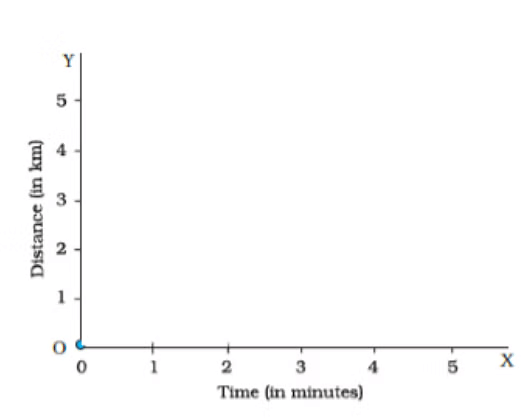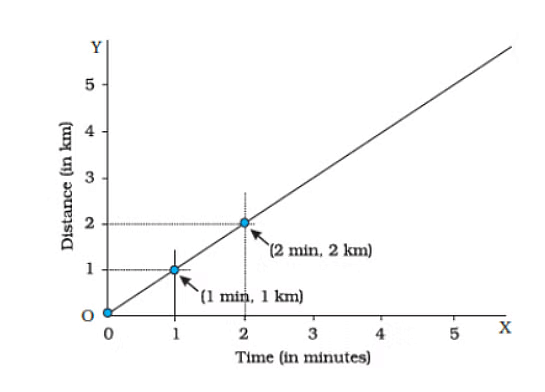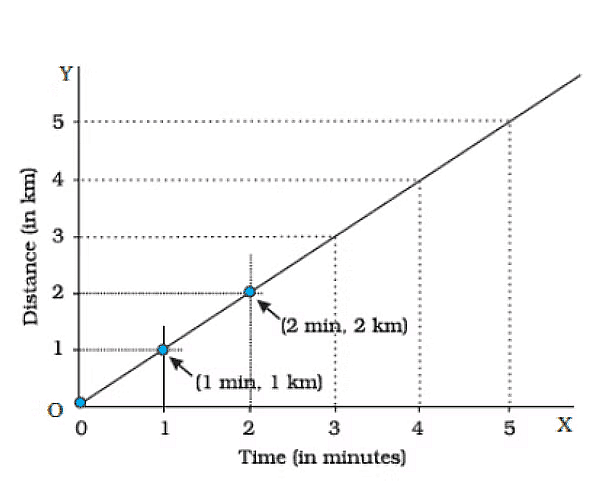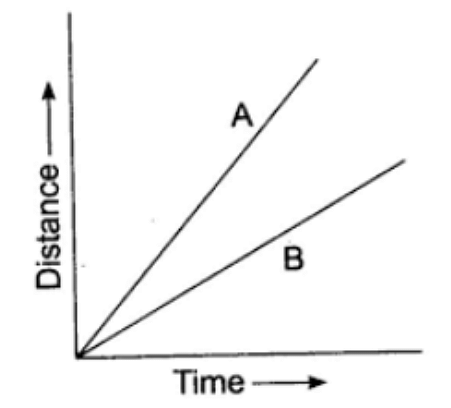Motion and Time Class 7 Notes Science Chapter 9
| Table of contents |

|
| Slow or Fast |

|
| Speed |

|
| Types of Motion |

|
| Measurement of Time |

|
| Distance-Time Graph |

|
Slow or Fast
Fast and slow motion can be defined as the how fast or slow an object is moving. If an object takes a long time go cover a certain distance is known as slow while an object which takes shorter time to cover the same distances is known as fast. This can be represented by the speed of the moving object.
An object A that covers a certain distance in less time is said to be faster than object B which takes a longer time to cover the same distance and is said to be slower than object A.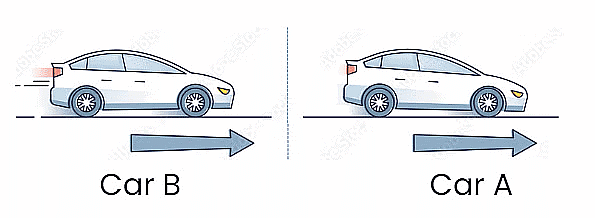 Example: If your school is at a distance of 5 km from your home and you want to go to school by bicycle, then it may take about 25 min to reach the school and if you go to school by school bus, then the same distance can be covered only in 10 min.
Example: If your school is at a distance of 5 km from your home and you want to go to school by bicycle, then it may take about 25 min to reach the school and if you go to school by school bus, then the same distance can be covered only in 10 min.
It means that a bicycle takes a longer time than a bus.
We can determine whether an object is fast or slow by determining its speed.
Speed
The distance covered by an object in unit time is called the speed of the object.
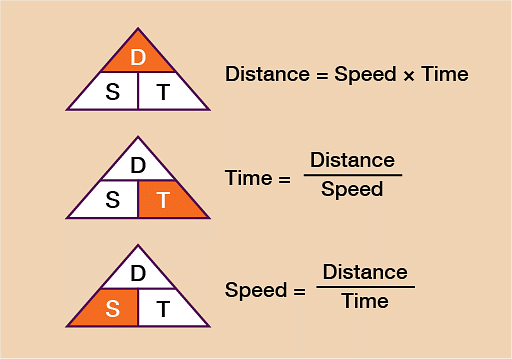 The mathematical expression for speed is given by:
The mathematical expression for speed is given by:

| The SI unit of speed is meter/sec (m/s). |
Example: In a 4000 m marathon race, Roger covers 400 meters in 1 minute. What is the speed of Roger in m/s and in km/h respectively?
Sol: (i) The speed of Roger in m/s
Roger covers 400 m distance in 1 min

We know, 1 min = 60 sec [Converting minutes to seconds]

The speed of Roger is 6.66 m/s
(ii) Now, we have to find the speed of Roger in km/h.
To do so, first, we must convert meters to kilometers and then time in seconds to time in an hour.
We know, 1 km = 1000 m
⇒ 1m = km
km
⇒ = 0.4 km [Distance covered by Roger in 1 minute]
= 0.4 km [Distance covered by Roger in 1 minute]
1 hour = 60 minutes
∴ 1 min =
Now, the speed of Roger in km/h is
Speed =
Speed = 0.4 x 60
Speed = 24 km/h
Tip: To convert speed from km/h to m/s multiply it by 5/18 and to convert it from m/s to km/s multiply it by 18/5.
Example: Manish covers the distance from his school to home in 10 minutes by running, whereas Rahul covers the same distance in 20 minutes by walking. If they start at the same time from school, who shall reach home first?
Sol: We know that the distance covered by objects in a given interval of time can help us to find out which object moves faster than the other.
Manish covers the distance between school and home in 10 minutes and Rahul travels the same distance in 20 minutes. Suppose, Manish and Rahul, leave school at 1 PM. Manish reaches home at 1:10 PM and Rahul reaches home at 1:20 PM. So, Manish reaches home before Rahul.
We can also conclude that Manish moves faster than Rahul.
Tip: Remember the object that moves faster covers a given distance in less time.
Types of Motion
There are 2 types of motion - uniform motion and non-uniform motion.
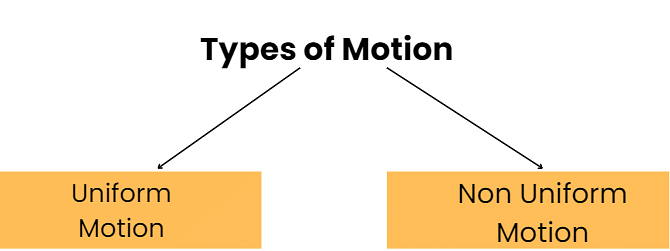
(i) Uniform Motion
An object moving along a straight line with a constant or uniform speed is said to be in uniform motion.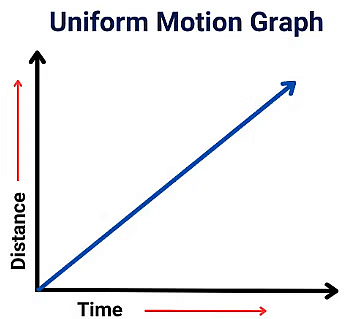
Example: The school bus is traveling at a constant speed of 15 km/hr in a straight line, as shown below. Its speed does not change at different points.
(ii) Non-Uniform Motion
If the speed of an object moving along a straight line keeps changing, then the object is in non-uniform motion.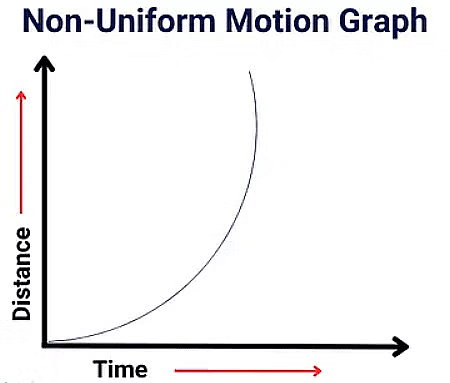
Example: The speed of the school bus is changing while it moving in a straight line.
Generally, vehicles moving on the road are in non-uniform motion, as they travel at different speeds at different time intervals.
Measurement of Time
A clock is a device used to measure time. Clocks use the concept of periodic motion to measure time. To measure time, we need a motion that repeats itself at equal intervals. Such a motion is called periodic motion.
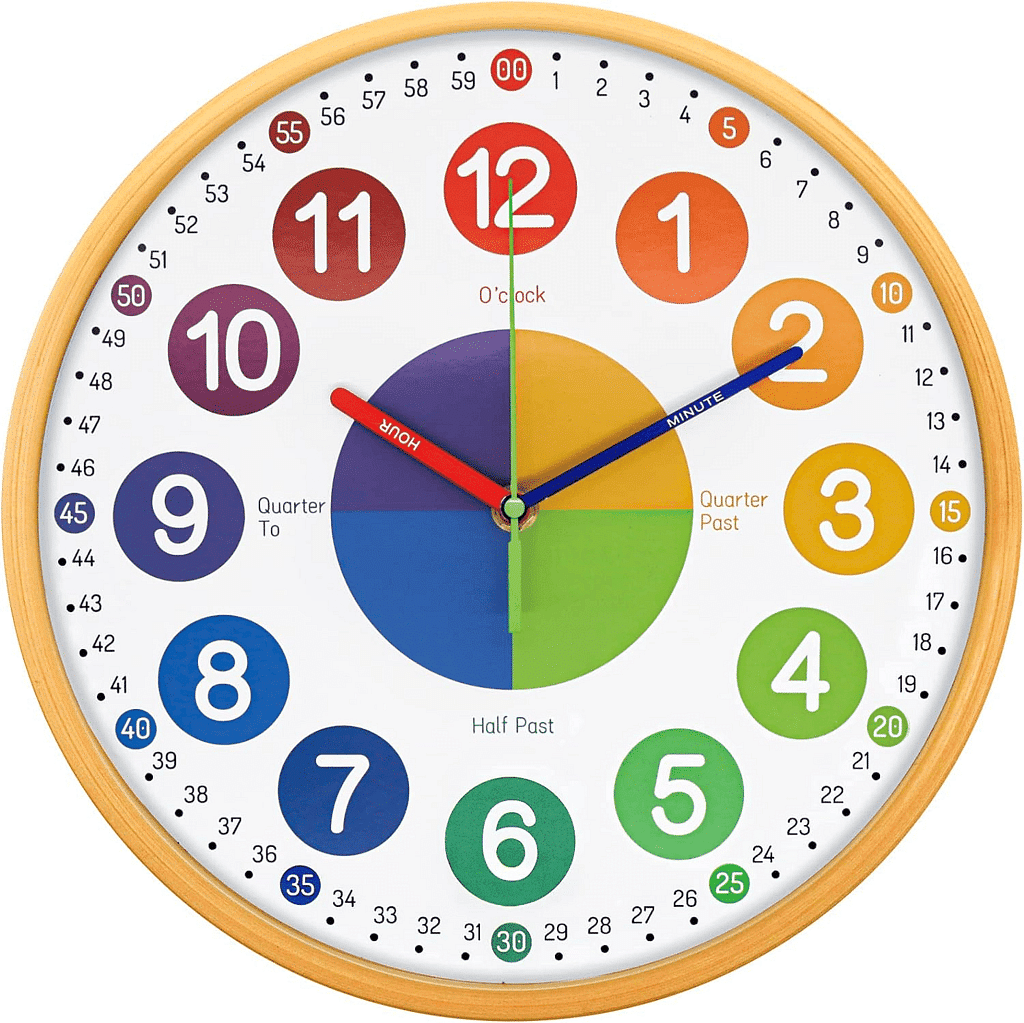 Clock
Clock| The SI unit to measure the time is a second. |
Simple Pendulum
A simple pendulum contains a Bob. It is a metallic ball or a stone that is suspended from a rigid stand with the help of a thread.
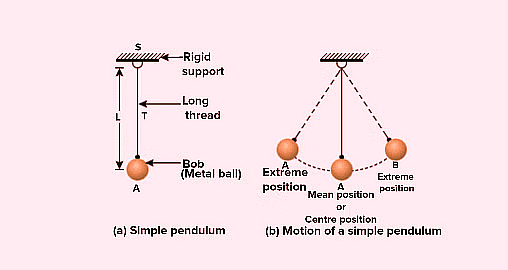 Periodic Motion of a Simple Pendulum
Periodic Motion of a Simple Pendulum
Oscillatory motion - The bob of the pendulum does move from the centre (mean position) of the pendulum to its extreme position on the other side. The to-and-fro motion of the pendulum is called an Oscillatory Motion or a periodic motion.
Oscillation - When the bob moves from its centre (mean position) to its extreme ends it is said to complete one oscillation.
Time Period of a pendulum - The bob starts at its resting point (mean position) and swings to one side (A), then to the other side (B), and back to the middle (O). That whole motion from A to B and back to A is one oscillation. The time taken by the pendulum bob to complete one oscillation is called its Time Period.
The time period of a simple pendulum is given by:

Example: Calculate the time period of a simple pendulum that takes 55 seconds to complete 50 oscillations.
Sol: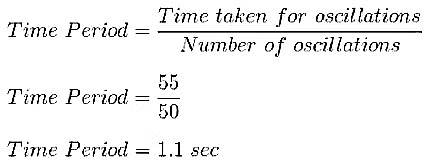
Units of Time & Speed
Unit of Time:- 1 minute = 60 seconds
- 1 h = 60 minutes
- 1 day = 24 hours
- 1 week = 7 days
- 1 year = 365 days
- 1 decade = 10 years
- 1 century = 100 years
The unit of speed depends upon the unit of distance and the unit of time used.
- The metre is the standard unit of distance and second is the standard unit of time. So, the standard unit of speed is metre per second (m/s).
- The large values of speed are expressed in kilometre per hour (km/h) and in this case, the distance travelled is measured in terms of kilometre and time taken is measured in an hour.
- The small values of speed are expressed in centimetre per second (cm/s) and in this case, the distance travelled is measured in terms of centimetre and time taken is measured in second.
If we have to compare the speeds of a number of objects, then we must express the speeds of all those objects in the same unit. Conversion of km/hr into m/s and vice versa
Conversion of km/hr into m/s and vice versa
Example: A car moves with a speed of 40km/h for 15 minutes and then with a speed of 60km/h for the next 15 minutes. Find the total distance covered by the car.
Sol:
Case 1:
Speed = 40 km/h
Time = 15 min = (15/60) h
Distance (d1) = Speed x Time = 40 x (15/60) = 10 km
Case 2:
Speed = 60 km/h
Time = 15 min = (15/60) h
Distance (d2) = Speed x Time = 60 x (15/60) = 15 km
Total distance (d) = ( d1 + d2 ) = 10 km + 15 km = 25 km
Measuring Speed
We measure speed with the help of two main devices - a speedometer and an odometer.
(i) Speedometer A speedometer is a device on the dashboard of a vehicle that measures and displays the speed of a vehicle. It measures the speed in kilometers per hour.
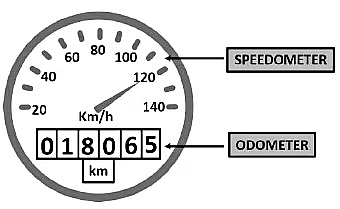
(ii) Odometer The distance moved by a vehicle is measured by a device called an odometer. The odometer records the distance traveled by the vehicle in kilometers (km).
Example: The odometer of a car reads 57,321.0 km when the clock shows the time 8:30 AM. The odometer reading was changed to 57,336.0 km. Calculate the speed of the car in km/min during this time. Express the speed in km/h also.
Sol: Initial reading of the odometer of the car at km
Final reading of the odometer of the car km
The car starts at 8:30 AM and stops at 8:50 AM
Distance covered by car = km - km = 15 km
Time taken between 8:30 AM to 8:50 Am = 20 minutes = (20/60) hour =1/3 hour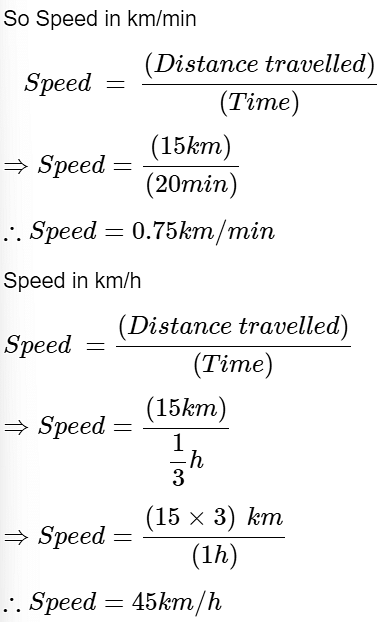
Distance-Time Graph
A distance-time graph is a graphical representation of how far a body has traveled in a specified amount of time. It is used to depict the relationship between distance and time, where distance is plotted on the Y-axis and time is plotted on the X-axis.
We can get different types of distance-time graphs depending on the speed of the moving object.
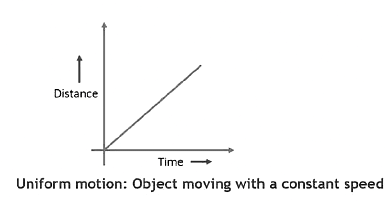
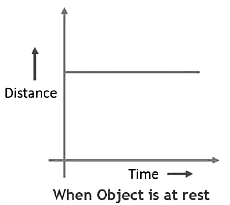
Interpretations from Speed-Time Graph
 Different distance-time graphsThe graphs shown below are distance-time graphs for various types of body motion.
Different distance-time graphsThe graphs shown below are distance-time graphs for various types of body motion.
(i) When a body is steady or stationary,
(ii) When a body is moving at a uniform speed,
(iii) When a body is moving non-uniformly with increasing speed, and
(iv) When a body is moving non-uniformly with decreasing speed.
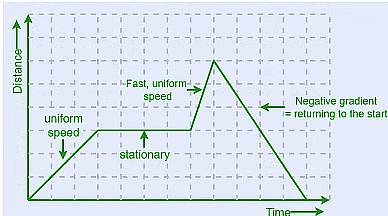 Distance-time graphHere are key observations derived from distance-time graphs:
Distance-time graphHere are key observations derived from distance-time graphs:
- When an object is stationary, the graph runs parallel to the time axis.
- Uniform motion results in a straight-line distance-time graph.
- The speed of the object is equal to the slope of the distance-time graph.
- A constant slope in a straight-line graph indicates uniform speed, implying consistent motion.
- An increased slope in the graph signifies an increase in speed.
- A negative slope indicates that the object is returning to its initial position.
Making Distance Time Graph
The steps for creating the distance-time graph are given below:
- Draw two perpendicular lines (OX and OY) to represent the x-axis and y-axis. Mark the x-axis and y-axis and divide them in equal intervals.

- Choose one scale to represent distance (for example, the x-axis to represent distance where 1 km = 1 cm) and the other to represent time (for example, the y-axis to represent the time where 1 min = 1 cm).

- Mark the values of time and distance in the graph.
- Mark the set of values of time taken and distance covered in that time by the object in the graph. For example, if 1 km is covered in 1 minute then mark 1 unit on both the x-axis and y-axis.

- Now draw lines parallel to the x-axis and y-axis at the points that you have marked.
- Mark the points where these lines intersect on the graph. These points show the position of the moving object.
- Now join all the points of intersection and obtain a straight-line graph.
This is the distance-time graph of a moving object.
To find the speed of the distance-time graph
Speed = distance/time
= (final position of object – initial position of object)/time taken by objectAlso, the speed of the distance-time graph can be calculated by the Slope of a graph. The steeper the slope of the graph, the more is the speed of the object. For example, in the graph given below object A has a steeper slope. This means that object A is moving at a higher speed than object B.
 2 straight lines with different slopes
2 straight lines with different slopes
Example: The graph below describes the journey of a man. Determine the speed of the man for each part of the journey.
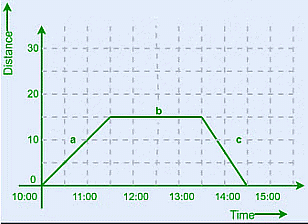
Sol: We know that ,
From the given graph, we can conclude that,
- Part a: From 10:00 to 11:30, the man traveled 15 km from the starting point in 1.5 hours. The speed at part a: Speed = 15/1.5 = 10 km/h
- Part b: From 11:30 to 13:30, the man is at rest, so the distance remains the same.
The speed at part b: Speed = 0/2 = 0 km/h (not moving) - Part c: From 13:00 to 14:30, the man traveled the 15 km back to where they began in 1 hr. The speed at part c: Speed = 15/1 = 15 km/hr
Example: Jay is going for a drive in his car. The distance-time graph given below describes his full journey. Calculate his total distance traveled during his journey, as well as his average speed between 4:30 and 5:30.
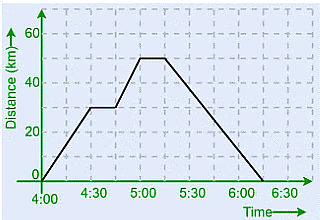
Sol: Jay traveled 30 km away from his home and then stopped for a while. He again drove 20 km and stopped briefly. He then traveled 50 km back home.
So, the total distance traveled by Jay = 30 km + 20 km + 50 km = 100km.
From the axis, we can observe that two big squares total 30 minutes. Hence, one big square is worth 15 minutes. From 4:30 to 4:45, Jay is at rest.
So, his speed between 4:30 and 4:45 = 0/0.25 = 0 km/h.
To calculate the average speed of Jay between 4:30 and 5:30, we need to calculate the slope of the graph between 4:45 and 5:00. This period lasted for 15 minutes, which is equivalent to 0.25 hours – this is the “change in x”.
During this period, he increased his distance from home from 30 km up to 50 km. That means he traveled 20 km in total – this is the “change in y”.
So, we get, slope = 20/0.25 = 80 km/h.
Hence, the average speed = (0 + 80)/2 = 40 km/h
|
111 videos|246 docs|28 tests
|
FAQs on Motion and Time Class 7 Notes Science Chapter 9
| 1. What is the difference between slow and fast speed in terms of motion? |  |
| 2. How can you measure the speed of an object in motion? |  |
| 3. What are the different types of motion that can be observed in everyday life? |  |
| 4. How is time measured in the context of motion? |  |
| 5. How can the speed of an object be represented on a distance-time graph? |  |

|
Explore Courses for Class 7 exam
|

|

